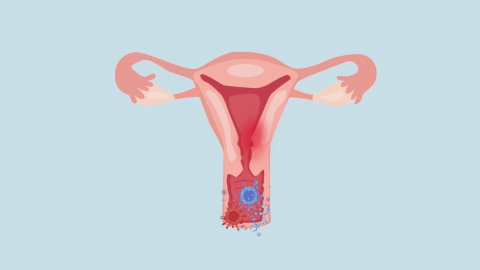What are the symptoms of uterine prolapse?
Generally, symptoms of uterine prolapse include a protruding mass within the vagina, a feeling of heaviness or lower back pain, increased vaginal discharge, stress urinary incontinence, and pain during sexual intercourse. If discomfort symptoms appear, it is recommended to seek timely diagnosis and treatment at a regular hospital. Detailed analysis is as follows:

1. Protruding mass within the vagina: In cases of uterine prolapse, the uterus descends from its normal position along the vagina, and in severe cases may protrude outside the vaginal opening. Initially, the mass protrudes after prolonged standing, coughing, or straining during bowel movements and can retract on its own when resting. As the condition worsens, the protruding tissue must be manually repositioned, or may even be irreducible, remaining exposed for long periods and prone to friction, ulceration, and infection.
2. Feeling of heaviness and lower back pain: Uterine prolapse stretches the surrounding ligaments and fascia and causes pelvic congestion, leading patients to often feel a distinct heaviness in the lower abdomen, vagina, and perineum, especially exacerbated after prolonged standing or physical exertion. Meanwhile, the lower back, under persistent abnormal pressure, experiences soreness or distending pain, which can be relieved after lying down and resting.
3. Increased vaginal discharge: The prolapsed uterus remains exposed outside the body for a prolonged period, causing poor local blood circulation and insufficient tissue nutrition supply. This leads to thinning and congestion of the vaginal mucosa, making it susceptible to ulceration and infection, which in turn increases vaginal discharge. The discharge may appear purulent or have an odor; in severe cases, vaginal bleeding may also occur.
4. Stress urinary incontinence: Normally, the pelvic floor tissues support the bladder and urethra, maintaining their normal positions and functions. In cases of uterine prolapse, the pelvic floor supporting structures are damaged, causing the bladder neck to descend and weakening the function of the urethral sphincter. When abdominal pressure increases—such as with coughing, laughing, sneezing, or lifting heavy objects—the pressure within the bladder exceeds the resistance of the urethra, causing involuntary leakage of urine.
5. Pain during sexual intercourse: Uterine prolapse alters the normal anatomical structure and position of the vagina. During sexual intercourse, the prolapsed uterus and vaginal tissues are stimulated or impacted, causing localized pain and discomfort. Additionally, thinning and dryness of the vaginal mucosa can intensify the pain during sexual activity, affecting sexual quality of life.
In daily life, it is important to avoid heavy physical labor, maintain a healthy weight, strengthen pelvic floor muscle exercises, drink plenty of water, and maintain a balanced diet to promote recovery and prevent worsening of the condition.




